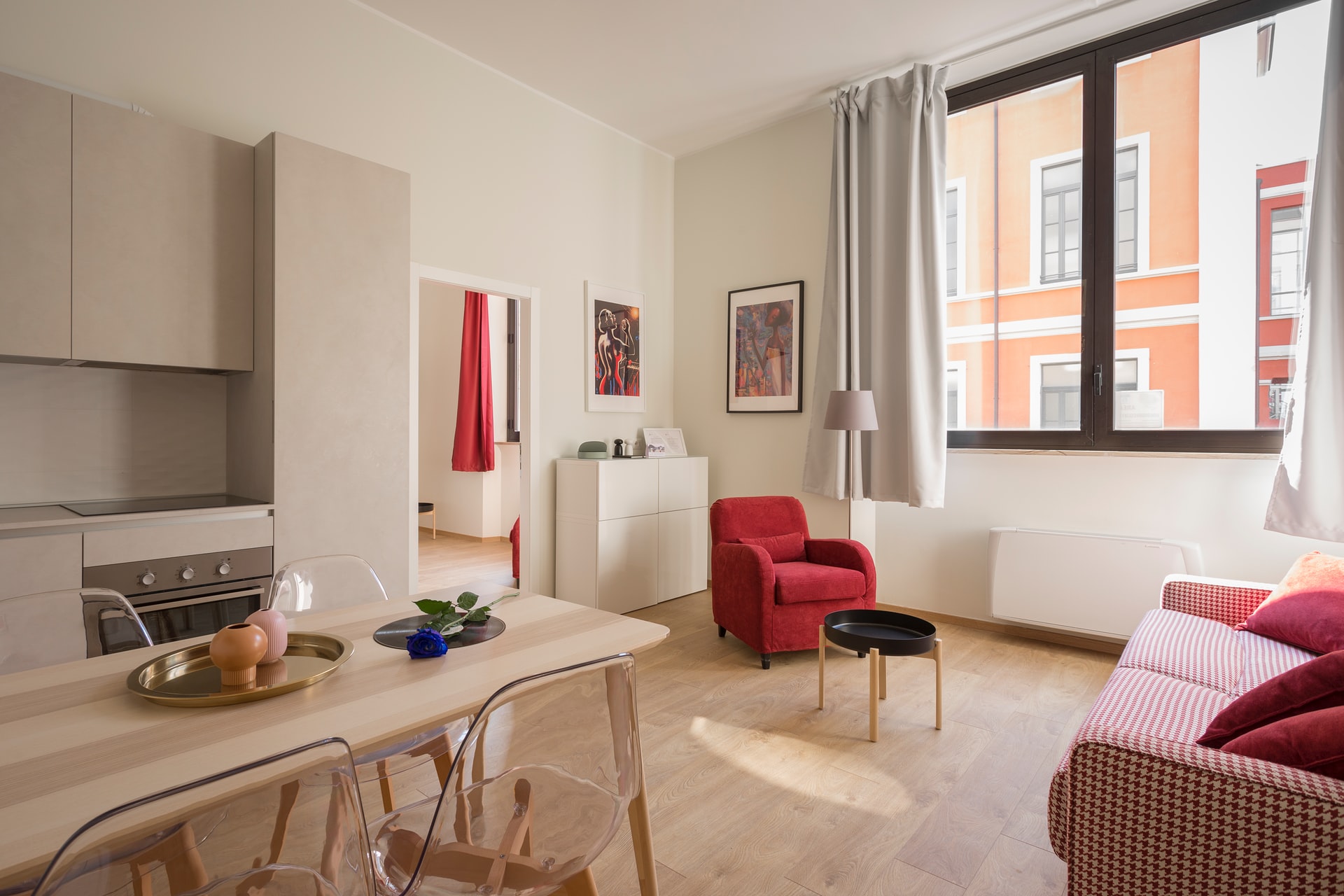
For older adults, sometimes the house they’ve lived in for years becomes too much…too much upkeep, too big, too many stairs, or even too many memories…This is the point where many older adults make the difficult decision to move to something smaller, and easier to keep up with, like an apartment.
Moving from a house to an apartment is one of the hardest adjustments that you or your parents may ever have to make. The good news is that it can be easier on everyone involved, if they are prepared for it. Since it can be so intimidating, especially if you are 65 or older and it’s your first time experiencing this type of living situation, there are some things to consider when making the move. It can be overwhelming and there are many questions that you may have about the process.
For example:
What do you do with all your favorite things you can’t live without?
Is the move for downsizing? Accessibility? Location?
What amenities are most important?
Is the location safe? Is there security on site?
There are others, but those are some of the most common ones we’ve heard.
Admit it. We all have items that are precious to us and must be in the interior of our homes to make it home! Let’s say Grandma’s “chamber pot”..ok….maybe not that. But something.
First decide what you’re able to afford as far as rent or mortgage. Then do an inventory of all things you wish to keep with you. If you’re a “pack rat”…well…now’s the time to go cold-turkey and toss out some stuff…the good stuff at a yard sale…and save the best stuff for your new domain.
Now, try to shop around and see how much space you can get for your buck. The bigger… the more you get to take with you. If you can afford the den or the extra room…take it! Perhaps you can sacrifice indoor space for a small yard to garden or tinker in.
Ok, I know you will be taking the major elements with you (like the couch and coffee table, kitchen table and bedroom furnishings). Keep this in mind when looking at your new space. Take measurements with you. Don’t assume it will fit. Measure the item length and width, height as well if needed. If you’re older and need assistance ask one of your children or grandchildren to help you.
As you put the major elements into your new space, this is your chance to be an interior decorator yourself. Put the biggest pieces in first and on the biggest walls. Then bring in the small must have items (coffee and end tables, lamps and so on). Just because you are used to things being arranged in a certain way…now is your chance to break out of the box…and change it up some. Move things around this way and that way to see which looks better?
When accessorizing the room, group things together that match or would normally be seen together. Say you collect old radios and they are here and there. Bring them together in one room…now arrange them to complement each other on a bookcase or shelf. Same with anything that you find collectable…dolls…trains…or if you’re brave enough glass collectibles!
Now for the walls. Perhaps you can turn some loved things into wall decor. Put small things together in a shadowbox. Before hanging anything arrange it on the floor or bed and see if it works together. Play around with it and be sure you want it where you put it. Measure from the ceiling to the desired height of the hanging area. This works great for pictures that need to be even horizontally. Space evenly to keep it uniform.
Even though it’s a big change moving from a house to an apartment, it doesn’t mean you can’t make your new space into a home. It may take some getting used to, but with time, and the right touch, you may just grow to love it.
Now, what about furniture for older adults with special needs?
If you are challenged with buying furniture for an elderly person, there are a few things you should keep in mind as you start your search.
First, how is their health and physical condition? Can he/she easily rise from and sit down into a chair? If not, furniture with special options are available. The seats of chairs and recliners rise to a higher level with the push of a button. The elderly person can simply back against it, then lower himself down to a seated position by pushing another button. Furniture technology is great!
Another thing to consider when picking out furniture for an elderly person is the fabric or upholstery on the item. If the elderly person tends to slide out of seating easily, a couch with a slick leather upholstery might not be as good a choice as one with a textured fabric. The texture of the fabric can help prevent slipping out of the seating.
Make sure the furniture you pick out for an elderly person is easy to clean. If they have other health issues that might mean occasional soiling of the furniture, they will need to be able to clean it quickly and thoroughly.
Most important, when buying furniture for an elderly person is to remember that even though their eyesight might be a little less than it once was, the furniture should still be appealing to their taste. If your grandfather hates floral fabric, don’t buy him a room full of furniture with huge magnolia blossoms on it just because you happen to like it. If you are incorporating this furniture into your living quarters, and you and the elderly person who will be sharing your space disagree on furniture tastes, do your best to get the new furniture in a complementary shade or fabric. It doesn’t have to be an exact match. Use a solid blue lift chair to coordinate with your blue, burgundy and green floral sofa and loveseat. Make every effort to respect his or her taste while accommodating any special needs.
If you are buying furniture for an elderly or special needs person, ask questions of your furniture rep. Tell them about your special needs and concerns. Furniture sales reps are trained to help you fill your needs. If your local furniture store doesn’t carry what you need, chances are the salesperson can refer you to a website or medical supply store that does. If ordering furniture from a website, be sure you know all the shipping and handling costs up front. Also, find out warranty information. Don’t overlook medical supply stores in your furniture quest. In addition to medical necessities such as oxygen tanks, portable toilets and wheelchairs, many carry furniture items like lift chairs and recliners that can greatly improve comfort and quality of life.
If at all possible, take the elderly person you are buying furniture for on your shopping trip. Ask for input. This will insure your furniture purchase is one you’ll be happy with for a long time.
Hopefully this gives you some food for thought as you consider the move from a house to an apartment, as well as furniture to make life a little easier for older adults.
At Silver Companions, we understand the challenges faced by aging adults, as well as those who care for them. We are here to help, and be a resource, in any way we can. Call or email us, for a free consultation. We can talk through your specific situation and make a recommendation based on your circumstances and budget. Call us at (678) 494-8129 or email us at info@SilverCompanions.com.





